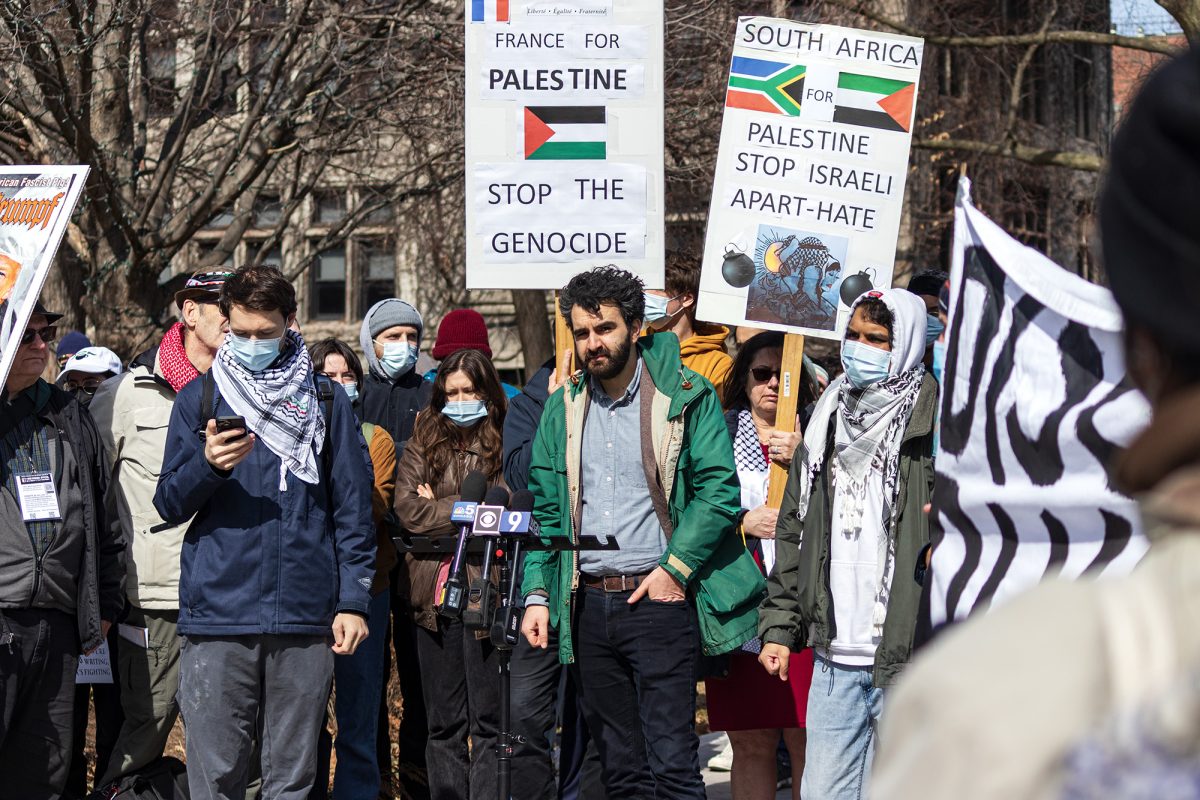On Saturday, September 30, Dean of the College John W. Boyer and two other University of Chicago professors led a group of students and staff on a bike tour through the South Side of Chicago. This tour, held twice a year, has become a mainstay of campus life throughout the years. I attended this tour and enjoyed the ride through the diverse neighborhoods of Chicago’s South Side, as well as the interesting pieces of information shared by the three professors who led the tour. However, a serious case of misinformation early on in the tour at Stephen A. Douglas's tomb and memorial needs to be addressed.
The Reparations at UChicago Working Group (RAUC) has brought attention to the slave-owning past of Stephen A. Douglas. A politician and U.S. senator in his lifetime, Douglas provided the first University of Chicago with a donation of land—valued at over $1.2 million today—to establish the institution in 1856. He subsequently served as the chairman of the board of the University. He used the capital created by the labor of up to 150 slaves on his family's plantation to fund both the endowment to the University and his political ventures. As described in the RAUC’s recent paper, he paid no attention to the brutality faced by his slaves from the southern overseers at his plantation, or to a plea to reunite a family of slaves through the swapping of slaves with his wife’s relatives. A bronze plaque of a bust of Douglas still stands in Hutchinson Commons, one of the buildings on the University of Chicago’s Hyde Park campus.
Furthermore, the RAUC has researched the historical ties between the “old” University of Chicago, founded by Stephen A. Douglas, and the current institution located in Hyde Park. They used, among other sources, Dean Boyer’s own book, The University of Chicago: A History (University of Chicago Press, 2015), to provide an argument that the two institutions were closely linked in terms of faculty, culture, and donor networks. The first University of Chicago campus, located in Bronzeville, was closed in 1886, and after a change of name to the old institution, the University of Chicago reopened in Hyde Park in 1890. Dean Boyer notes in his book that “the new University of Chicago was also deeply indebted to a group of leaders who were profoundly influenced by the old University” and that “several of the largest early gifts to the new University came from donors who were either associated with the old University or acting on behalf of those who did have durable ties” (the gifts specifically mentioned by Dean Boyer in his book amount to over $1.6 million, more than $65 million in today’s currency). The research presented in the RAUC’s paper leads one to conclude that the current institution ultimately owes its stature to the funds provided by Stephen A. Douglas to found the first University in 1856, gained by him through the work of the enslaved.
Information on Stephen A. Douglas’s slaveholding past and the current institution’s substantial historical ties with the old University, and therefore Douglas’s legacy, was omitted from Dean Boyer’s talk on September 30. The second stop on the aforementioned bike tour was at Douglas' Tomb and Memorial on 35th Street, at which point Dean Boyer and his fellow professors proceeded to speak about the old University of Chicago, which had been located nearby, and Douglas himself. There were stories of the U.S. senator’s “political prowess,” but not once did his slaveholding past enter the discussion. Furthermore, Dean Boyer stated that the two University of Chicago institutions shared no “economic connections” apart from sharing the same name. This is in apparent contradiction to his own writing and other sources cited in the RAUC’s paper.
A conscious decision was made to stop at Stephen A. Douglas's tomb and memorial on September 30, and with that decision comes a sense of responsibility. Dean Boyer, as a leader of that tour and a professor of history, should be expected to be aware of Stephen A. Douglas’s slaveholding past and the current institution’s substantial connection to his legacy. Most importantly, he should be expected to educate others about this history.
To commemorate the lives and labor of those enslaved on Douglas’s estate, the names of every man, woman, and child of the Douglas family slave lists are read aloud at each gathering of the Bronzeville Historical Society, located at Stephen A. Douglas’s tomb and memorial. Dean Boyer and his fellow professors should follow the Society’s example on next year’s tour. They have a responsibility as educators to provide, at the very least, the full picture when discussing someone with as dreadful a past as Stephen A. Douglas—a man who became rich and furthered his career through the exploitation of slave labor. I call on Dean Boyer to do better the next time his tour visits the tomb and memorial of Stephen A. Douglas, or any other person who prospered by owning slaves.
—Eyjólfur Guðmundsson is a graduate student in the Biological Sciences Division.





